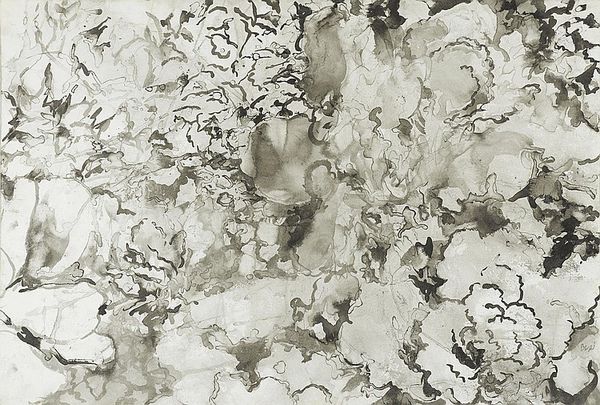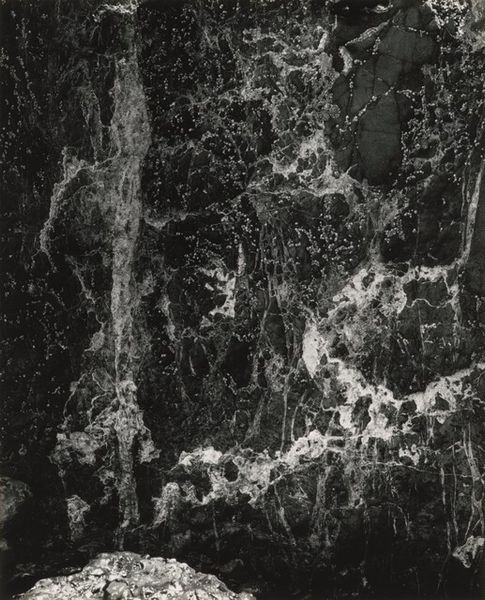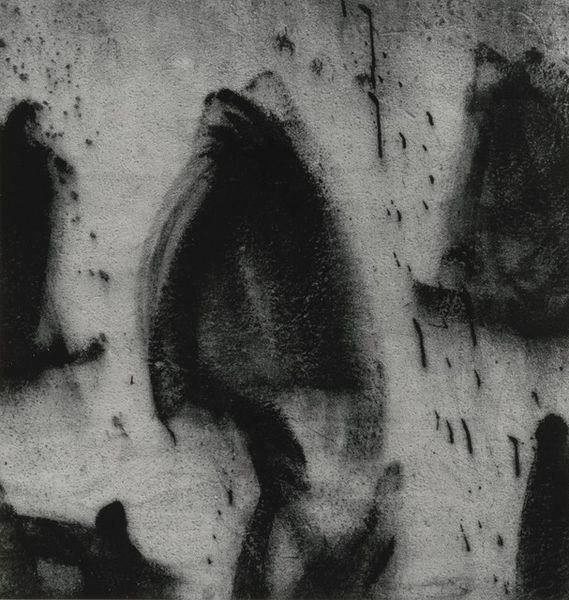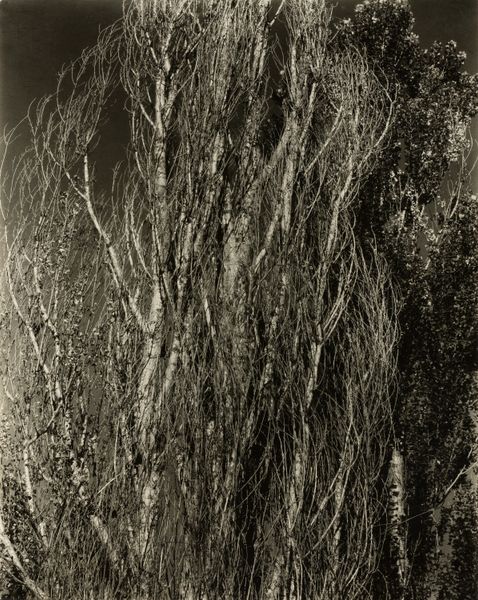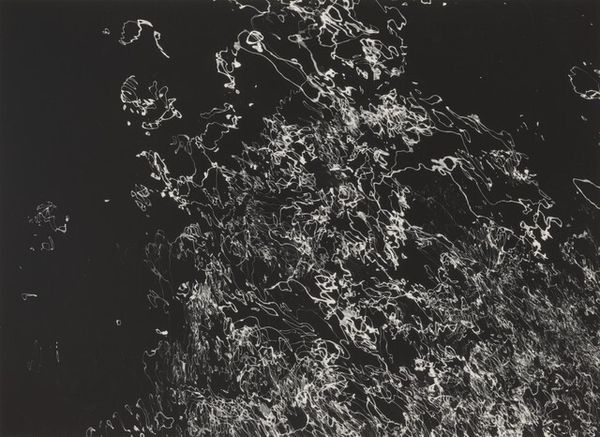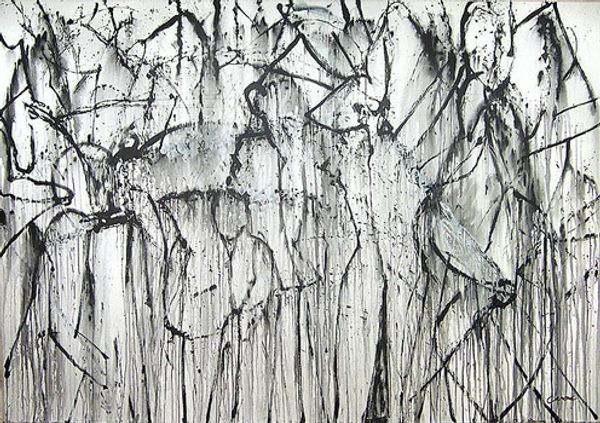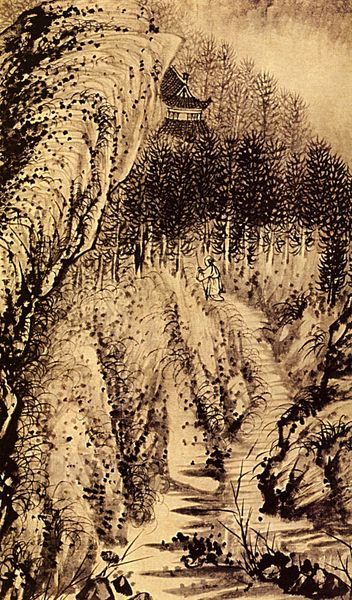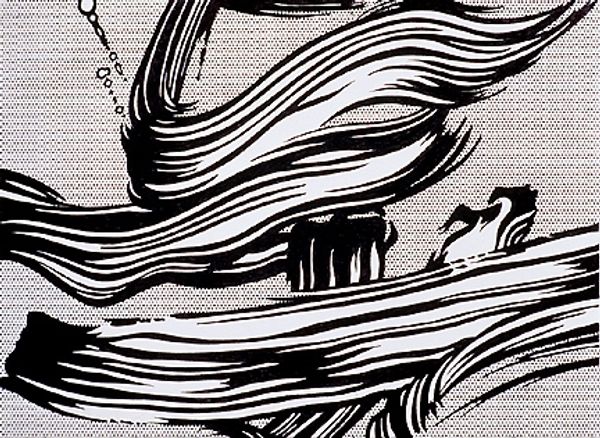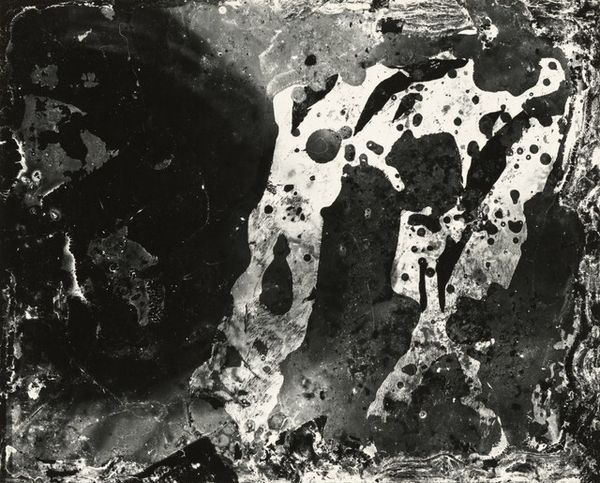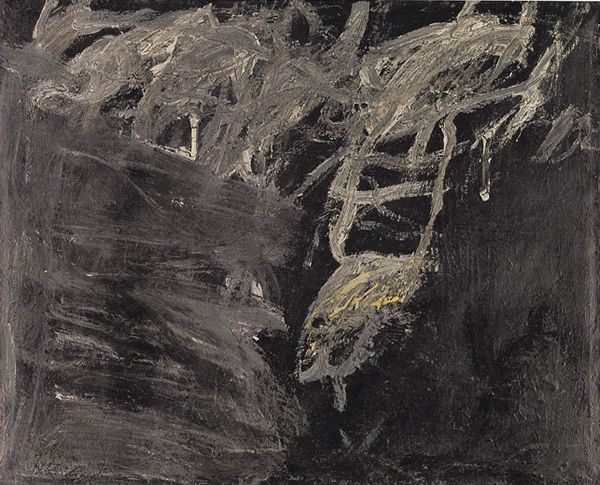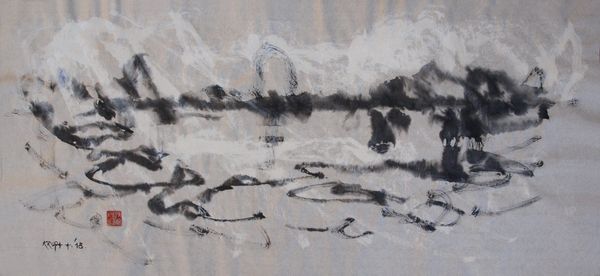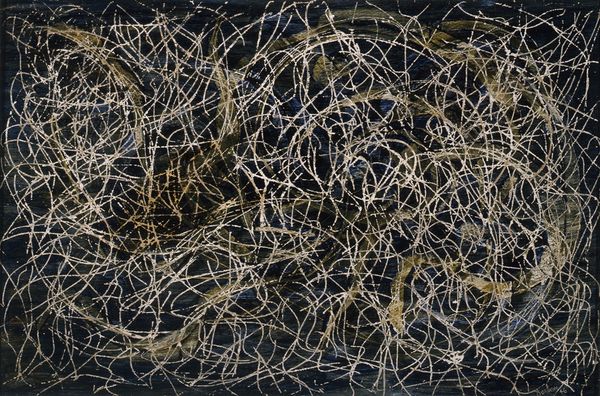
drawing, ink
#
drawing
#
landscape
#
charcoal drawing
#
figuration
#
ink
#
pen-ink sketch
#
line
#
monochrome
Copyright: Antonio Areal,Fair Use
Curator: This ink and charcoal drawing, simply titled "Untitled," was created by Antonio Areal in 1955. It presents us with a rather dense, monochrome landscape. Editor: It feels overwhelmingly dark, almost claustrophobic, doesn’t it? All these intersecting lines and murky blacks give me the impression of peering into a thick forest under a moonless sky. Curator: Indeed. The material execution is quite interesting; Areal combines ink and charcoal to generate layered tonal effects, which enriches the landscape elements depicted here. Consider the artist's choices around labor, how long something like this could have taken versus painting it. Editor: Looking closer, I see figures interspersed within the linework, aren’t I? They’re difficult to distinguish at first. Are those humans or angels? The social or spiritual climate after WWII may have influenced his imagery? The artwork reminds me a little bit of German Expressionism—specifically the preoccupation with inner turmoil visualized through stark landscapes. Curator: Exactly! And while he engages figuration, there is nothing that says for sure that this isn’t also just a series of layered actions and markings to arrive at a representational idea, regardless of societal undertones. How are these actions part of the greater political picture in modern Portuguese artwork and how might this have affected Areal? Editor: I think your perspective is incredibly valuable, given how Areal positions his artwork within broader cultural and political conversations in his country during a time of considerable shift, we should consider if Areal was even allowed to discuss any issues facing Portuguese society or government during his life. Curator: Right, the artist is making these decisions from a socio-political climate whether conscious or not, in response to or actively denying artistic license, therefore making it part of their artwork in context of materiality and historical references.. Editor: It is worth examining the artist’s decision to obscure figures—that creates ambiguity for viewers; they can no longer passively consume his representation. They have to question what are they truly seeing in context of what are they allowed to be shown. Curator: Right! Thinking about materiality with the cultural landscape provides more information than analyzing them apart. Editor: Precisely! Considering all of that contextual background enriches one’s perception of it, don't you agree? Curator: Absolutely.
Comments
No comments
Be the first to comment and join the conversation on the ultimate creative platform.

